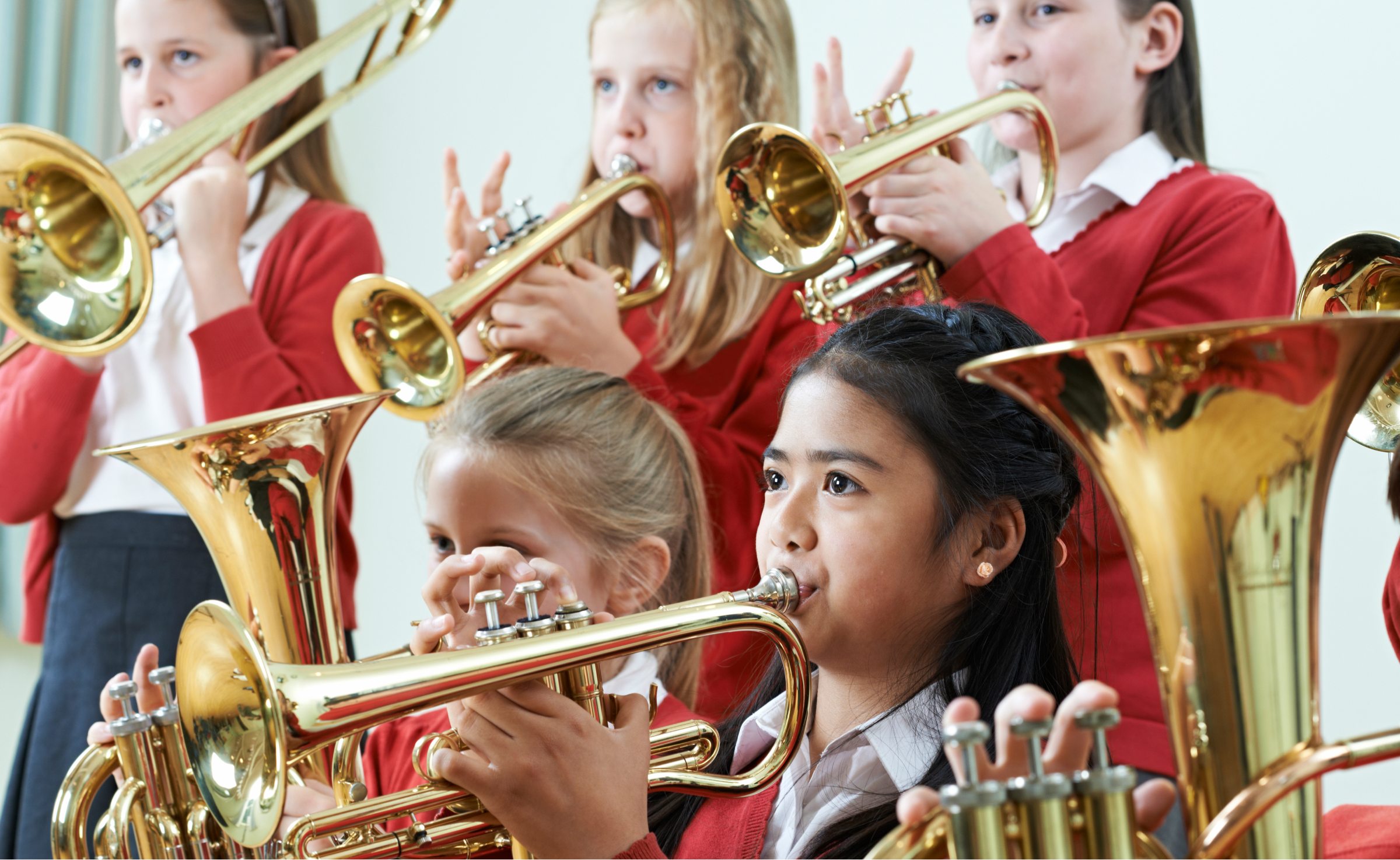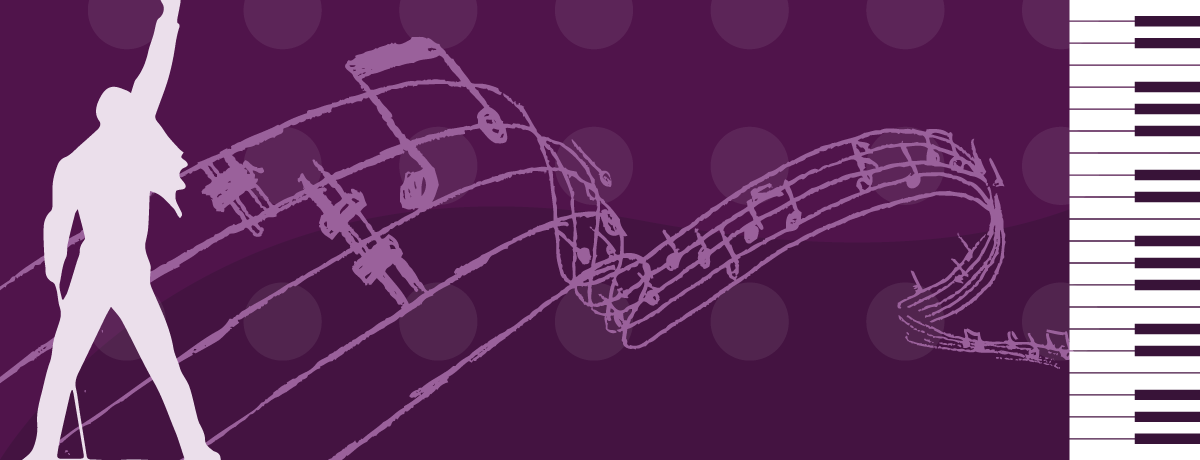
How to meet the individual needs of each player when teaching an ensemble piece.

BY: Guy Bunce
09 May 2019
Dr Guy Bunce shares his approach to ensemble teaching using his arrangement of Pastime With Good Company.
For me, arranging has always been one of the most enjoyable and rewarding aspects of my work as a composer, conductor and educator. The brief for any arrangement makes the task much like a puzzle: meeting the needs of the musicians involved whilst remaining faithful to the original piece. When Trinity College London launched their exciting new Brass syllabus, the opportunity to write an arrangement that could engage student brass players proved to be a very rewarding puzzle indeed.
My brief was to pick a piece that would be engaging and arrange it in such a way that it could be used to teach ensembles in a flexible manner. Through teaching ensembles myself, I have witnessed first-hand the joy of bringing together budding musicians and the social and musical rewards brought about by collective music making. However, never far from my mind are concerns over finding a suitable arrangement that fits whatever ensemble I may find in front of me, or the worry that I am not a specialist in every instrument in my ensemble. The challenge at hand was to find a way of meeting these concerns with a fresh arrangement that could be used in a teaching environment and also to showcase students in a performance.
Rationale
Pastime With Good Company felt very much like the right piece to arrange as it has an upbeat engaging character and is steeped with historical significance that school teachers might like to explore in cross-curricular activities. Furthermore, it was originally written in three parts and would therefore allow my emerging arrangement plan to maintain the integrity of the original.
My first task was to explore the new Trinity Brass syllabus and scale listings in depth and make a list of appropriate ranges and keys for each instrument. Next I arranged the piece into three parts (melody, harmony, and bass) and noted how the appropriate ranges for each instrument fitted these parts. By approaching the arrangement in this way, I hope that it gives brass teachers maximum flexibility as even with an ensemble of two players, an effective performance can be generated.
Using the arrangement
The first step in using the arrangement is to ascertain how to divide the parts across your ensemble. Take into account the level of your individual players and the ranges of each part in the arrangement and allocate appropriately. Most instruments in the arrangement can perform at least two of the three parts therefore increasing flexibility: trombone, for example, could perform either the harmony or bass part.
The greatest characteristic of Pastime is that each of the three parts is interesting and melodic in itself. With this in mind, if you were faced with an ensemble of baritone horns, trombones and Euphonium, the piece still sounds good with the melody missing. This actually generates an ideal opportunity to bring singing into your ensemble teaching (see this blog post by Vanessa Heine on the benefits of employing singing in your teaching). For example, with a three-verse structure, your musicians could take it in turns to accompany using their instruments and sing the tune. The original words of the piece have been inserted into the conductor’s score to facilitate this.
Working with larger ensembles
When a larger ensemble is available, try to aim for a balance of instruments over the three parts. The dancelike atmosphere of the piece is brought about by the use of rhythmic cells and motifs. With this in mind, it would be worth exploring the piece’s repeated rhythmic ideas through clapping exercises until they are secure and before moving on to instruments. The melodic aspect of each part is also based on cellular repeats and intervallic relationships that can be explored and mastered in smaller chunks to aid learning.
Performance
If you are planning on working towards a performance of the piece, the verse structure affords the opportunity of engaging your players in the arranging process and allowing them to take ownership over their performance. Players could plan out when and what they are going to play to add variety to the piece. For example, your players may decide that it would be good to perform the first verse with the melody and harmony only and then introduce the bass part for the second verse.
The texture might be thickened further with the addition of more instruments for the final verse therefore producing a climax. Anyone waiting their turn in the arrangement could sing the melody or add percussion based on the notated percussion part. If you have a pedal bass drum available, one player might even want to add the drum part whilst playing another part or additionally, foot stamping could add a percussive aspect and help players feel the beat! Such a creative approach allows the teacher to bring in the teaching of musical elements and explore wider musicianship.
For example, students could consider how the following musical elements could affect the pace and dramatic trajectory of a performance:
- dynamics (how about a steady increase in volume across the arrangement leading to a climactic final verse?)
- beat (stamping in time with the music or using a pedal bass drum)
- rhythm (creating own rhythmic accompaniment or analysing the rhythmic cells that make up the piece)
- timbre (how best to bring in or drop out instruments for best variety and musical effect)
Trinity has made available the full conductor’s score and also the original Sibelius, XML, and MIDI files. With these latter resources you can create your own arrangement with suitable software and make it easier for one musician to swap parts mid-performance. This opens up even more creative performance possibilities.
Working example
In the school in which I work, the senior leadership team is always looking for opportunities for cross-curricular work relating to thematic topics. We were able to join our brass and music classroom teaching to the current Year 6 thematic topic on the Tudors, culminating in a showcase performance of Pastime with our brass ensemble, school choir, and one Year 6 music class. The brass teacher had available 1 cornet player, 1 horn player, 2 baritones, and a trombone. The brass group mapped out the arrangement and decided to allocate the vocal line to the school choir and percussion parts to a class music group. The classroom music teacher also used the top three concert-pitch staves of the score to teach their class simple keyboard parts.
The children greatly enjoyed planning and making the arrangement their own over a series of lessons; the horn player even took it upon herself to use Sibelius in the computer suite to re-devise her part to mix the harmony and melody lines. The arrangement started with a solo cornet against light percussion and moved through five statements of the piece gradually building to the full ensemble and dramatic ending.
This example hopefully demonstrates how open ended the arrangement is, and how it can be tailored to whatever ensemble you may be presented with. Get creative, and definitely bring your students on board with the creative process!





Comments & Replies